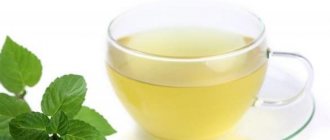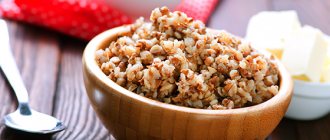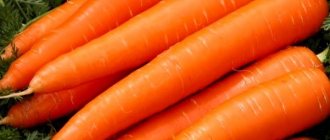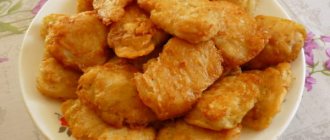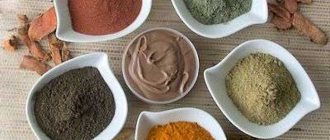High-fat varieties from seas and rivers
It has been proven that any sea or river fish is much healthier for the body than animal meat. Fillet dishes turn out very tender, soft and pleasant. When cooked, river and sea pulp loses a minimal amount of liquid due to the large amount of easily digestible protein and the small amount of connective tissue.
The list of microelements and the level of fat content depends on the habitat of the fish, the age, sex of the fish and the time of year in which it is caught. River varieties contain lower amounts of vitamins A, B and D, iodine and magnesium, but river pulp contains more easily digestible iron.
Sometimes the fillet has a specific smell of mud with algae. The value of dietary fiber from fish from the sea is greater than that from river fish, since the pulp contains a large amount of proteins, vitamins soluble in water, iodine and polyunsaturated acids.
All fish varieties can be divided into the following categories according to the degree of fat content:
- low-fat (up to 3%) – pike perch, crucian carp, pike meat, pollock, mullet, pike, small roach, omul;
- medium fatty (up to 9%) – herring, perch, carp, pink salmon, carp, horse mackerel, tuna;
- high-fat (up to 30% or more) - saury, salmon fillet, lamprey, eel, mackerel, herring, catfish, sturgeon, asp.
Beneficial properties of fatty fish
The fat in a fish carcass is concentrated in the intestinal and abdominal areas. Meat can contain up to 30% fat depending on the type of fish, and its volume also increases during the spawning period of fish. The fatty pulp is rich in omega 3 and 6 fatty acids, vitamins, macro- and microelements, which ensures the full functioning of all vital systems of the human body.
Fish pulp is almost completely digestible, which has a complex beneficial effect on the body. Regular consumption of fatty fish reduces the risk of cardiovascular diseases. Phosphorus in the composition improves the condition of tooth enamel, strengthens hair, brightens the skin and strengthens the musculoskeletal system.
Fatty acids work together to reduce cholesterol, enhance tissue regeneration, increase protective function, and improve the condition of bones. The effects of acids activate brain activity, improve immunity and visual acuity.
For baby food, fatty fish is extremely necessary, since vitamins have a beneficial effect on the mental development of children, sharpen attention, improve memory and perception of the surrounding reality.
Valuable elements of fish meat have a calming, activity-suppressing effect, produce happiness hormones and improve mood.
Fish for weight loss
The product is a source of high-quality protein, which belongs to the group of easily digestible components. For example: meat delicacies are completely digested by the body in 4 hours, while fish ones take 2. When creating a diet menu, you can safely include fish in your evening meal.
The beneficial properties of the product are due to its unique composition, which includes:
- Omega-3 fatty amino acids;
- vitamins of group A, D, B;
- phosphorus, zinc and iodine.
The calorie content of a dish directly depends on the method of its preparation. Nutritionists recommend eating boiled or oven-baked fish. There are a lot of dietary recipes for fish dishes, thanks to which you can easily prepare a tasty and healthy lunch or dinner at home. Consume the delicacy 3 times a week to fully satisfy the body’s natural need for nutrients and keep yourself in shape.
By eating seafood, you protect yourself from heart disease, improve immunity and ensure stable brain function.
Possible harm
Fatty fish can have negative effects on the body. Before eating, raw materials should be carefully inspected for damage, and the catch region should be clarified to eliminate the possibility of poisoning.
People with allergies should not eat it; during pregnancy, saury, pink salmon, tuna and hake should be excluded from the menu. It is better not to consume raw fish pulp due to the possible presence of bacteria in the meat.
Important! You should not store fatty fish fillets in a warm place or in sunlight for a long time, since in the light, fat oxidation processes that are harmful to the body grow in the flesh.
Fish for medicinal purposes
Therapists declare the benefits of the product for the body and prescribe it as the basis of therapeutic nutrition. With the 5 table diet, the product is used to treat:
- liver cirrhosis;
- cholecystitis;
- hepatitis A;
- gallstone disease.
Table No. 5 has a varied menu, but its origins lie in the obligatory consumption of seafood. It is best to boil a piece in a double boiler or bake in the oven, but only after preliminary heat treatment. You can find recipes for fish dishes in books on healthy eating or ask your doctor.
During the diet, you are allowed to cook jellied fish, soufflés or broths. You can stick to the 5 table diet for 1.5-2 years.
For medicinal purposes, it is recommended to use low-fat varieties of fish, the list of which is given above. If you are a fan of herring, then before eating it you need to soak it in a mixture of milk and water. Ready-made delicacies are served as cold appetizers.
Which red fish is the fattest?
The leading positions in terms of fat content are occupied by all varieties of salmon fish. Depending on the time of year, the volume of fat in the pulp ranges from 10 to 20%. More pleasant, tender and non-bony meat is characteristic of trout, salmon and salmon.
Salmon is a red fish that has a high concentration of omega 3 and 6 fatty acids, so eating salmon will protect the body from gastrointestinal diseases, thrombophlebitis, and liver diseases. It is better to fry salmon on a grill pan using oatmeal, flour and starch breading.
It is also convenient to smoke fish, marinate, salt and add to salads, appetizers and put on sandwiches. The optimal cooking method is considered to be baking fish in foil or a cooking bag, as well as eating the tender flesh lightly salted.
Do not weigh down the meat with a lot of oil and seasonings.
List of essential ingredients present in oily fish
Nature has endowed this representative of the fauna with a unique balance of microelements and vitamins, which a person should use to the fullest.
- Fish oil is characterized by a high content of unsaturated fatty acids, of which linoleic and arachidonic acid are considered the most valuable.
- The fat of oceanic fish (especially in their liver) is rich in vitamins A and D. The white meat of cod, which lives in the waters of the Atlantic, Arctic, and Pacific oceans, is an excellent dietary product. Just like her liver, rich in beneficial elements and high energy content. There is many times more vitamin A in oceanic fish caught around the world than in meat. This especially applies to conger eels, sharks, and tuna.
- Omega-3 and Omega-6, polyunsaturated fatty acids that slow down the aging of cells in the human body.
- Amino acids themselves are not produced in the human body, but come from consumed foods. Their best source is fish. Amino acids are involved in the synthesis of proteins, the formation of red blood cells, and the neutralization of toxins in the liver.
- Vitamin groups D, B are absolutely necessary for normal metabolism, absorption of calcium and phosphorus.
- Marine fish are valuable sources of iodine and phosphorus. Iodine in fatty fish contains about 30% of the daily value in our diet. It is an important element for maintaining the immune system and normal functioning of the thyroid gland. For half the daily requirement of phosphorus, one salmon steak of 150-200g is enough. This is necessary for the human musculoskeletal system.
The fattest fish in the world
Euchalon is named the fattest fish in the world. About 200-300 years ago, the inhabitants of Canada used it in dried form as a wick for lighting rooms. Euchalon lives in the Pacific Ocean, its fillet has a fat content of more than 40%, which means that the pulp is not suitable for dietary nutrition.
In Eastern Europe, the fattest fish, golomyanka, lives on the cleanest Lake Baikal. Its carcass is almost completely transparent, and the length of the carcass can reach from 15 to 25 cm. When you try to cook golomyanka, you will end up with a pan full of fat and a skeleton without meat. It is this northern fish that is the basis of the menu of all other inhabitants of the north of Baikal.
Important! In domestic waters there is a pearl fish called bleak, which makes excellent canned food for the winter.
Description of varieties
The proposed description of river and sea fish will allow you to understand the advantages and disadvantages of fatty fish fillets.
Low-fat fish for diet
- Eel (up to 30%) is a delicious ocean fish with an increased amount of proteins, sodium, magnesium, potassium, copper, manganese, selenium, vitamins B, A, D. Eel meat has a positive effect on the cardiovascular and nervous system, has a rejuvenating effect , treats eye diseases.
- Mackerel (depending on the season 13-27%) - the fish is considered one of the fattest inhabitants of the sea. The fillet contains iodine, phosphorus, zinc, chromium, sodium, amino acids, vitamins of groups A, E, B, PP. Consumption of mackerel has a preventive effect against cancer. Mackerel is shown as part of the menu for nursing mothers, the elderly and children. Large mackerel increases the body's resistance to harmful influences, strengthens the heart and blood vessels.
- Herring (19.5%) is a marine and oceanic inhabitant, popular due to its high content of potassium, proteins and antioxidants. There are no carbohydrates in herring. The pulp has a preventive effect on the health of the heart, blood vessels, vision and blood.
- Salmon (13.6%) is a sea creature that combines a complex of vitamins B, A, D, omega 3 acids, proteins and minerals. Salmon steaks are considered healthy foods. Salmon has regenerative properties and has an anti-inflammatory effect. The pulp will strengthen blood vessels, improve heart function, and sharpen brain function.
- Capelin (7.2%) is an oceanic fish with a high content of amino acids, protein, potassium, fluorine, and sodium. Consumption will improve the functioning of the thyroid gland, brain and heart. The pulp, even with a high calorie content, is indicated for diabetics.
- Carp (5.3%) – inhabitant of fresh rivers and lakes. The fish has a sweetish taste of the flesh with a delicate and elastic fiber texture. Meat contains large amounts of magnesium and potassium, which improves the functions of the musculoskeletal system, restores the nervous system, improves the quality of hair and nails, and strengthens bone tissue. In terms of cost, carp are more budget-friendly than sea creatures.
- Trout (5%) – can live in rivers and seas. The color of the fillet can vary from pale red to white. Trout is famous for its high taste. The composition contains riboflavin, magnesium, potassium, folic and nicotinic acid. Systematic consumption of trout improves brain performance and accelerates metabolic processes in the body.
- Halibut (4%) is a type of flounder fish. Halibut is distinguished by its tender fillet with a pleasant characteristic sourness. Fillet contains folic acid, phosphorus, copper, selenium, and vitamins. The complex of useful substances accelerates metabolic processes and has a regenerating effect.
- Tilapia (3.7%) is an inhabitant of fresh waters with an excellent taste of meat. Tilapia is allowed for children's menus and for consumption by pregnant women. The pulp has a balanced composition of vitamins and minerals, but there is a high probability of purchasing a contaminated product.
It is necessary to ensure that the carcass of any variety is fresh, free of foreign odors and stickiness
Benefits and harms
The substances contained in hake fish bring extraordinary benefits to the human body. Marine fish contains most of the components required for the normal functioning of the body. The meat is completely lean and easily digestible. Nutritionists often recommend eating it for those trying to lose weight due to its low calorie content and ability to burn fat cells. Those wishing to gain muscle mass can also increase their consumption of hake, as it is high in protein.
Merluza is an excellent means of prevention against oncology, diseases of the cardiovascular system, as well as common diseases such as influenza.
Representatives of the female half of the population will appreciate the influence of the elements contained in fish on the condition of the skin, hair and nails. This fish will be extremely useful for those who live or work in poor environmental conditions.
However, along with its advantages, hake fish also has its disadvantages and contraindications. It is not recommended to abuse hake if:
- You are allergic. Hake, being a marine fish, can indeed cause an allergic reaction. Therefore, before giving it to children, it is better to consult the appropriate doctor.
- You suffer from constipation. Sea fish contains a lot of iron, which, due to its properties, will only worsen the situation.
- You have increased acidity in your body. Merluza will further increase the level and may harm the body.
Fish really does not have large bones in its meat, but small ones, harmless to an adult, can get stuck in the trachea of a small child. Make sure that all bones are removed during cooking, or buy ready-made cleaned fillet in the store, and then the benefits for the child’s body from the vitamins received will be invaluable. Elderly, nursing mothers, pregnant women and children over 1 year old can and should consume hake, if only a little. In large quantities it can be harmful to the body.
For what diseases is it useful?
What is useful about hake fish is that it helps with a wide variety of diseases. These include:
- Thyroid diseases. The high iodine content in fish will help restore the balance of this element in the body, improve the functioning of the glands, and restore hormonal levels.
- Diabetes. Merluza is indispensable for diabetics. This fish is almost the most dietary of all species and normalizes blood sugar levels.
- Problems with the cardiovascular system. Potassium, magnesium and sodium contained in fish are excellent in helping to equalize blood pressure and strengthen blood vessels.
- Problems with the musculoskeletal system. Hake is useful for strengthening bones and joints.
- Nervous system. Microelements contained in hake and its caviar promote sound sleep, stabilize the functioning of the central nervous system, improve memory, concentration and brain function.
- Digestive system. Merluza is strongly recommended for use by people with a slow or impaired metabolism, as it helps restore it and maintain a normal regime. Hake stimulates body detox.
- A recent cold or acute respiratory viral infection. Hake stimulates the immune system and helps to recover faster after illness or even surgery.
- Vision problems. Elderly people or those who work at a computer for a long time must regularly consume hake in order to maintain the level of vitamins necessary to maintain good vision.
List of varieties with fat content
The presented table provides a detailed list of high-fat sea and river fish varieties with a description and nutritional value.
| Name | Fats (g/100g) and calories (kcal/100g) | Features of the view |
| Catfish | 5.3/126 | The pulp can be consumed in any form: baked, boiled and fried. Fillet has a beneficial effect on thinking processes. |
| Cod | 0.7/78 | The high nutritional value of meat and liver improves the structure of the blood and improves the functioning of the heart muscle. |
| Trout | 2.1/97 | Carcasses rich in omega-3 acids are best obtained baked. Which trout tastes better is a matter of personal taste. |
| Mackerel | 13/181 | Does not cause allergies, it is best obtained lightly salted. |
| Pink salmon | 6.5/142 | It is better to use fillet for cooking in the oven. Meaty fillet perfectly absorbs spices and sauces. |
| Salmon | 13/201 | A valuable variety of fish that goes well with cream, cheese, and vegetables. Quickly saturates the body and is completely absorbed. |
| Flounder | 1.8/78 | Has a beneficial effect on the thyroid gland and immunity. |
| Pangasius | 3/90 | Dishes with pangasius improve metabolic processes, stabilize the nervous system and improve skin condition. |
| capelin | 11.5/157 | The composition contains a high content of B vitamins, which stabilize the amount of cholesterol in the blood. Dried, smoked and fried capelin tastes best. |
| Seabass | 15.3/99 | White fish with elastic, boneless meat goes well with vegetables, white sauces and rice. |
| Salmon | 6/140 | Improves blood flow, protects against blood clots. Fillet requires a minimum of spices and is combined with breading, vegetables, honey and soy sauce. |
| Tuna | 1/101 | “Sea beef” reduces the risks of cancer and inflammation. A vegetable side dish or frenchoza goes well with the fish. |
| Chum salmon | 5.6/139 | Prevents atherosclerosis, speeds up metabolism, and is a delicious treat on the holiday menu. |
| Halibut | 3/102 | Sharpens vision, saturates the body with vitamins. |
Fish varieties - list
The calorie content of a particular variety directly depends on its fat content level. Popular dietary recipes are based on the preparation of low-fat fish, which is easy to find among river representatives.
Based on fat content, fish products are divided into the following categories:
- Fat. The mass fraction of fat in the product is 8% or more. There are 230 kcal per 100 g, which significantly exceeds the calorie content of pork. These species include halibut, eel, and mackerel.
- Medium fat content. The amount of fat ranges from 4-8%, and the calorie content is 120 kcal. Representatives include pink salmon, perch, and trout.
- Low fat. Indispensable varieties of fish for the diet. The fat content does not exceed 4%, which allows the product to be classified as the so-called “lean” varieties. The calorie content of the finished dish is only 80 kcal. These include blue whiting, roach, carp, rudd, etc.
Table of calorie and fat content of fish
When compiling your daily menu, do not forget to include fish steak or steam cutlet.
You can find out which lean fish is best suited for your diet from the table below.
| Name | Calorie content, kcal. (per 100 g) | Fat content, % (per 100 g) |
| Cod | 69 | 0.6 |
| Blue whiting | 72.3 | 0.9 |
| Pollock | 73.7 | 0.9 |
| Ice fish | 75 | 1.4 |
| Zander | 84 | 1.1 |
| Flounder | 90.5 | 3.0 |
| Halibut | 103 | 3.0 |
| Perch | 117.9 | 3.8 |
| Tuna | 136 | 3.9 |
| Saira | 143.2 | 0.8 |
Representatives of the elite variety of red fish can hardly be classified as low-fat varieties. Nutritionists single out trout and pink salmon as the most dietary of their kind. The fat content in them ranges up to 7%, and the calorie content exceeds 150 kcal.
The low-fat varieties presented are easily digestible. In addition, they contain large amounts of iodine, vitamin B, and phosphorus. The caloric content table for dietary varieties is designed as an auxiliary guide to the correct preparation of a dietary menu.
When choosing a product for your diet, try to give preference to varieties with white meat. They are considered the most dietary and low-calorie. These include perch, cod and haddock.


